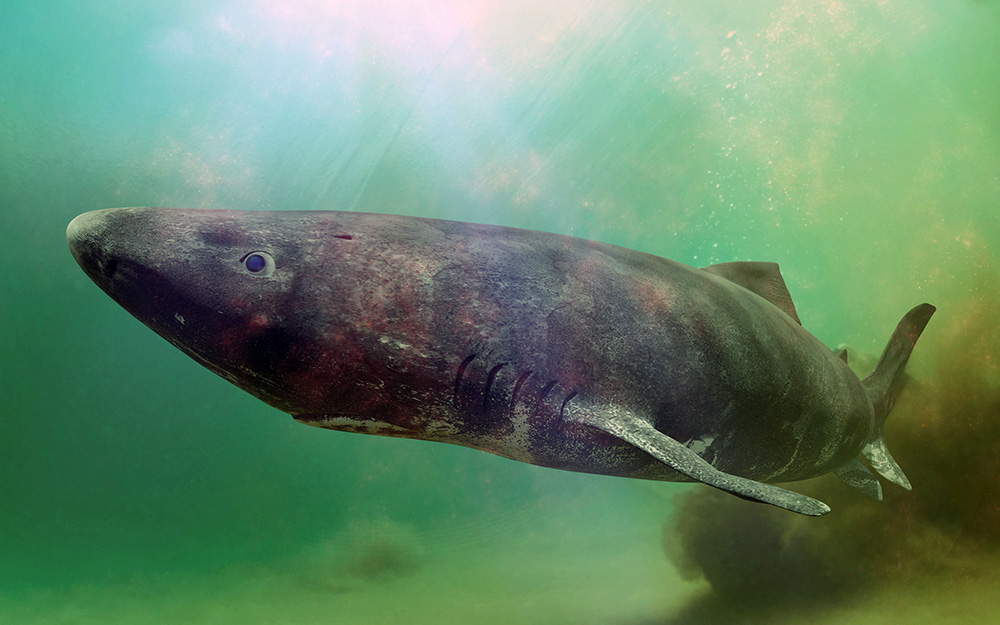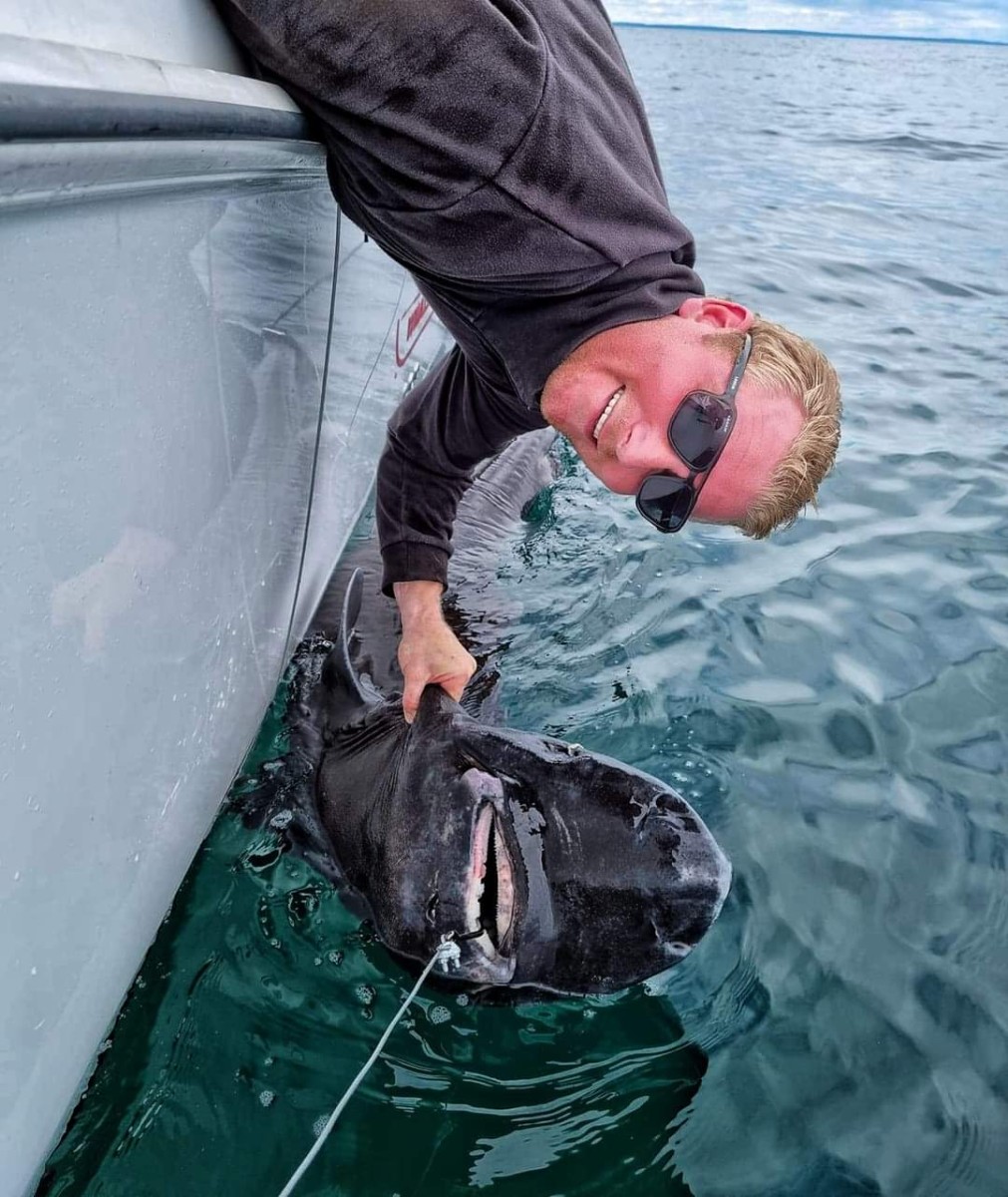Greenland shark
(Somniosus microcephalus)

Classification
General data
The Greenland shark (Somniosus microcephalus), also known as the gurry shark, grey shark, or by the Kalaallisut name eqalussuaq, is a large shark of the family Somniosidae (sleeper shark\"), closely related to the Pacific and southern sleeper sharks. The distribution of this species is mostly restricted to the waters of the North Atlantic Ocean and Arctic Ocean; however, more recent evidence indicates that at great depths it may range as far south as the Caribbean.
The Greenland shark has the longest known lifespan of all vertebrate species (estimated to be between 250 and 500 years), and is among the largest extant species of shark. It is a generalist feeder, consuming a variety of available foods. As an adaptation to living at depth, it has a high concentration of trimethylamine N-oxide in its tissues, which causes the meat to be toxic. Greenland shark flesh, treated to reduce toxin levels, is eaten in Iceland as a delicacy known as kæstur hákarl. As it lives in the cold depths of the Arctic and North Atlantic, isolated from human activity, it is not known to be a threat to humans, and no attacks have been recorded.
The Greenland shark is one of the largest living species of shark. It usually grows between 2.4–4.3 m (7.9–14.1 ft) long and weighs between 700–1,000 kg (1,500–2,200 lb), but has been recorded at up to 7.3 m (24 ft) and more than 1,400 kg (3,100 lb).
Males are typically smaller than females. It rivals the Pacific sleeper shark (possibly up to 7 m or 23 ft long) as the largest species in the family Somniosidae. The Greenland shark is a thickset species, with a short, rounded snout, small eyes, and very small dorsal and pectoral fins. The gill openings are very small for the species\' great size.
Coloration can range from pale creamy-gray to blackish-brown and the body is typically uniform in color, though whitish spots or faint dark streaks are occasionally seen on the back.












